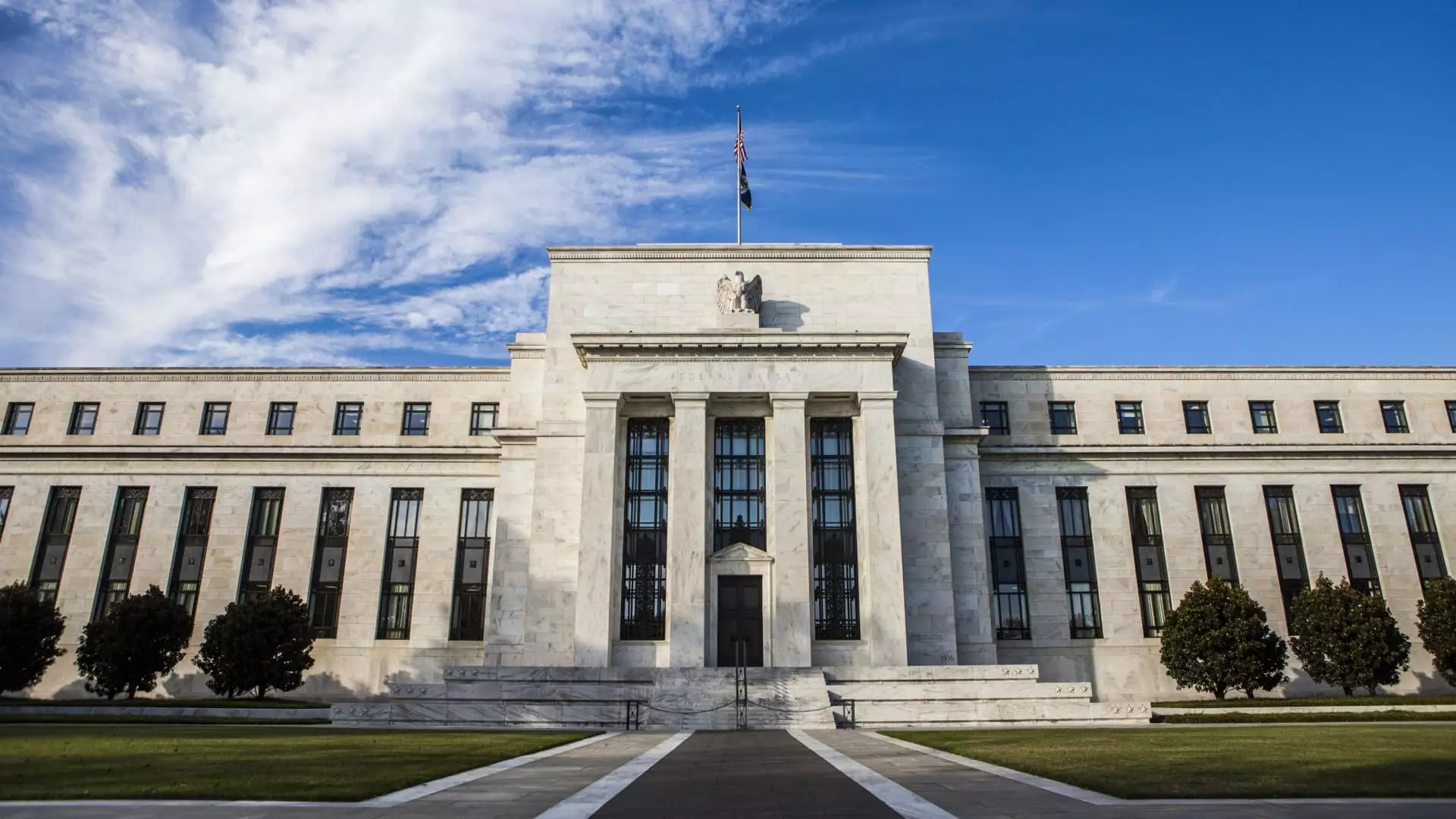As the financial world eagerly anticipates the conclusion of the Federal Reserve’s upcoming two-day meeting, a sense of uncertainty looms over economic forecasting. In particular, the decision to maintain interest rates holds significant implications for everyday Americans grappling with financial burdens. Despite recent claims from President Trump urging an immediate decrease in interest rates, the Federal Reserve appears steadfast in its commitment to stabilize inflation, which continues to hover above its 2% target. The central bank has enacted a series of rate hikes over the last year, raising its key benchmark by a staggering 5.25 percentage points, and it remains cautious in recalibrating its policy.
Matt Schulz, LendingTree’s chief credit analyst, succinctly summarizes the broader sentiment: “Anyone hoping for the Fed to ride in as the cavalry and rescue you from high interest rates anytime soon is going to be really disappointed.” This sentiment underscores the growing frustration among consumers who are concurrently battling high prices and costly borrowing options. With inflation stifling household budgets, many individuals and families may feel abandoned by a system that seems slow to adapt.
Understanding the relationship between the Federal funds rate and consumer borrowing costs is crucial for navigating financial decision-making. The Fed’s policies set the stage for how banks lend and borrow from one another overnight; however, these adjustments do not translate directly into immediate changes for consumers. As the Fed’s benchmark remains static, everyday borrowing costs—reflected in credit card rates, mortgages, and car loans—continue to burden consumers.
Credit cards, for instance, are typically issued at variable rates that correlate with the Fed’s federal funds rate. Despite a previous drop in the benchmark rate, average credit card interest rates have climbed to over 20%, an alarming increase that reflects lenders’ hesitance to reduce costs. According to Bankrate, the high interest environment coupled with escalating delinquency rates suggests a perilous cycle for many cardholders, particularly as the share of consumers making only minimum payments has surged to a 12-year high.
As mortgage rates continue to rise, consumers are left grappling with the double-edged sword of fixed-rate loans. Currently, the average rate for a 30-year fixed mortgage is approximately 7.06%, a significant hurdle for potential homebuyers. Unlike variable debts, these mortgages are insulated from immediate Fed shifts, leading to affordability issues that exacerbate challenges in the housing market. Mortgage holders, whose loans remain fixed, do not directly benefit from lower rates, and this static nature acts as a substantial barrier for those seeking to enter the market.
Joseph Yoon, a consumer insights analyst at Edmunds, aptly describes the challenge: “With the Fed signaling that any rate cuts in 2025 will be gradual, affordability challenges are likely to persist for most new vehicle buyers.” This highlights a troubling reality: while the possibility of future relief is on the horizon, current economic conditions show no signs of immediate improvement for consumers.
In tandem with mortgage woes, auto loans are becoming an increasingly pressing financial concern. Rates on auto loans, like mortgages, are fixed, but rising car prices are pushing overall loan balances upwards. The average interest rate for a new five-year car loan currently stands at around 7.47%, intensifying the affordability crisis for new buyers. As presented by McBride, the market environment for borrowing remains hostile, compelling consumers to make tough financial decisions amidst rising prices.
The dynamic of rising rates compounding upon escalating vehicle costs creates a daunting atmosphere for consumers. The challenge becomes not only about obtaining the necessary funds to purchase vehicles but also about managing the long-term financial consequences of high-interest liabilities.
Student loans present an additional layer of complexity within this landscape. Federal student loan rates are fixed, offering some semblance of stability for borrowers. However, new direct federal student loans for the upcoming academic year have seen an uptick to 6.53% from the previous 5.50%. Private loans, often tied to variable rates, fluctuate more drastically based on prevailing interest rates, making affordability inconsistent across different borrowing categories.
While the Fed may not exert direct control over deposit rates, changes in its target fund rate nonetheless ripple through to various financial products. Savers, on the other hand, may find silver linings amid the current situation. With top-yielding online savings accounts offering nearly 5% returns, consumers who can save are in a relatively stronger position, benefiting from the high yields.
The current interest rate climate poses significant challenges for consumers across various sectors, impacting everything from credit cards to student loans. As the Federal Reserve remains cautious in its approach, the promise of immediate relief seems distant. With inflation impacting the daily lives of many and borrowing costs at their highest in years, understanding these dynamics will be crucial for consumers as they navigate an uncertain future. While potential interest cuts loiter on the horizon, immediate financial strategies will be key for those looking to weather the ongoing storm.

